Published
on 28
Feb 2021
|
All rights reserved.
|
|
|
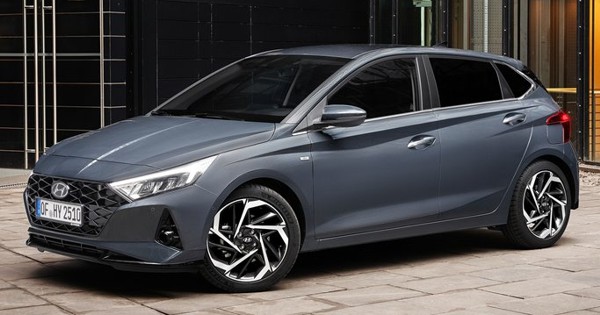
|
|
Sharper
styling is not up to everyone's taste.
|
|
Hyundai’s
European-dedicated supermini has entered the second generation. Unlike
the dull-looking original, this one gets sharper design under the
moniker “sensuous sportiness”, although the edgy front end is not up to
everyone’s taste. I think the front grill and headlights could be more
elegant, more solid instead of flimsy. As it is, it lacks the quality
perception of Peugeot 208, Renault Clio, VW Polo or Seat Ibiza. Nor it
is as funky as Toyota Yaris. When you look back a few years later, you
will find it easily forgettable.
The interior is worse. Yes, it has generous cabin space for a
supermini, especially rear legroom – thanks to a nearly class-leading
2580mm wheelbase and 30mm extra body width compared with the old car.
It is also well-equipped, with a standard TFT instrument across the
range and a center touchscreen of either 8-inch or 10.25-inch.
Hyundai’s infotainment system is easy to use, too. However, every
surface of the cabin is covered with low-rent hard plastics – shinny
ones at the upper half and scratchy ones at the lower half. It feels
very cheap.
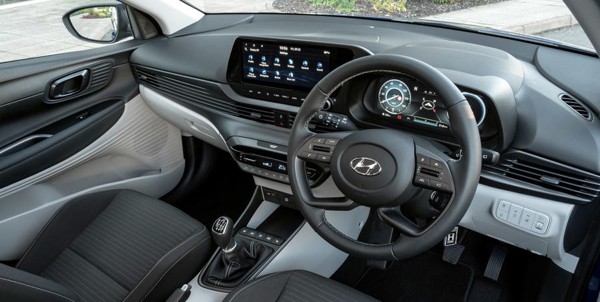
|
|
Hard
plastics are everywhere.
|
|
The car gets longer, wider but lower than before for a sportier
proportion. However, weight is claimed to be cut by 45 kg in average.
Its platform seems to be an evolution of the last one, so no surprise
to see the service of the 1.0-liter direct injection turbocharged
3-cylinder motor powering nearly all models (a naturally aspirated
1.2-liter old engine continues to serve as entry-level choice). This is
a good engine, matching Volkswagen’s similar unit in terms of power and
refinement, if not quite as enthusiastic as Ford’s 1.0 Ecoboost. Now it
can be mated with a 48V mild-hybrid system, which uses integrated
starter generator to provide extra boost at lower revs, to allow
engine-off coasting and to facilitate automatic stop-start. It works
smoothly and helps the new car feeling surprisingly brisk at low speed.
The lithium battery is placed under the boot floor, so it accommodates
no spare wheel.
The motor is paired with a 6-speed manual gearbox with a new automatic
clutch called iMT (intelligent Manual Transmission). It is basically
the same as Saab done with Sensonic almost 30 years ago, using sensors
in the gearshifter and throttle pedal to predict the intention of
gearshift, then actuate the electronic clutch automatically at the
right moment. The gearchange itself is still made manually by your
hand. It works, unfortunately again, this manual gearbox has a notchy
gearshift, so no matter how smart the clutch is, there is no fun to
speak of.
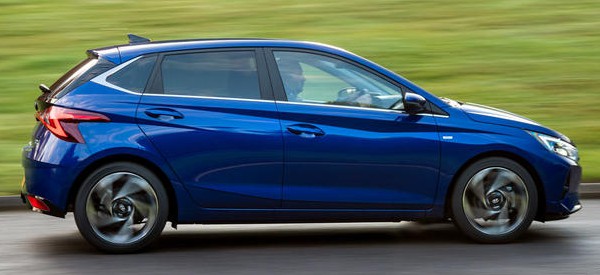 |
|
Keen handling
but stiff ride.
|
|
Given the wider tracks, a slightly lower center of gravity and less
weight, it is easy to see the new i20 corners better than the last one.
Its suspension setup is quite stiff, so the ride is quite harsh on
bumpy surfaces. Highway cruising is much better, but still you are
advised not to take the optional 17-inch wheels and low-profile tires.
On the flipside, the i20 is quite agile. The combination of quick
turn-in, lots of grip and the ability to tuck its nose into corner
under lift-off gives it a driver appeal not found in its predecessor.
If its steering is not so numb and its body control tighter, it could
be a worthy competitor to Ford Fiesta.
Still, the cheap cabin, stiff ride and poor gearbox make the i20 hard
to recommend. However, it might provide a good basis for the upcoming
i20N hot hatch.
|
Verdict:    |
Published on 10
Sep 2021
|
All rights reserved.
|
|
i20 N
|
|
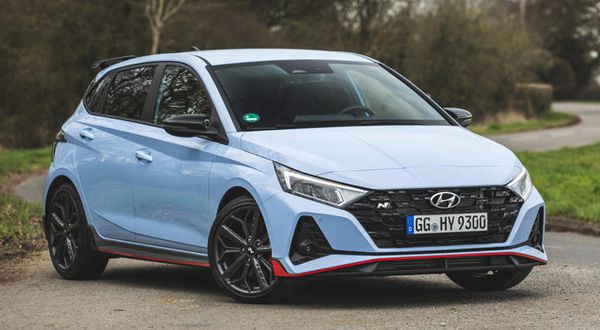
|
|
Hyundai
produces the most hardcore driver's car in B-segment hot hatch world.
|
|
Following i30 N and
Veloster N, this is the third Hyundai model receiving the N performance
car conversion. The last 2 N models caused a lot of sensation in both
sides of the Atlantic, thanks to the fact that they were the
brainchildren of ex-BMW M boss Albert Biermann. In an interview by Top
Gear a few years back, Biermann said Hyundai gave him a lot more
freedom than when he was at BMW M division, where he had to fight like
crazy for every car. It goes without saying Hyundai is willing to
commit a lot of resources to build the N brand to match the best of the
world.
A little bit unfortunately, the regular i20 is not a particularly
pretty car. Even the N conversion gives it significantly more
aggression, such as a roof-mounted rear spoiler, red painted front
splitters and side skirts accompanied with a rear diffuser and an oval
exhaust, it is still not quite a lovely design.
Even if you can overlook its exterior, the dull interior is hard to
ignore. However, it must be said that the interior of Ford Fiesta ST is
no
better. In fact, in terms of materials or infotainment system, the i20
N might feel a tad more upmarket than the Ford. It also offers more
space for rear passengers and a larger boot. Moreover, the driving
position is near perfect. The bucket seats are supportive and mounted
low enough. The steering wheel is nice to hold, and the pedals are
positioned perfectly for heel-and-toe action.
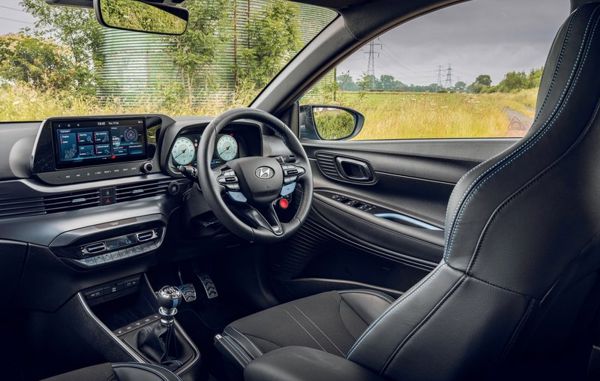
|
|
Dull
looking it might be, the driving position and pedals placement are
perfect.
|
|
Open the bonnet, it is even better. While Ford employs a 1.5-liter
three-cylinder turbo, Hyundai uses a new Gamma II 1.6-liter direct
injection turbo four-cylinder. Similar to the version debuted on
Sonata, it features Hyundai’s CVVD continuous variable valve duration
technology to improve output and fuel efficiency. There is also a
higher, 350-bar direct injection system. The motor produces 204
horsepower and 203 pound-foot of torque, very good and competitive
against Ford. A standard 6-speed manual gearbox with automatic
rev-matching and Torsen limited slip differential transfer its power to
the front wheels, achieving 0-60 mph in a claimed 5.9 seconds, which is
0.3s quicker than Ford. Top speed is reached at 143 mph.
The know-how of Mr. Biermann is best shown in the chassis tuning. There
are stiffer springs, dampers, anti-roll bar, a thicker torsion beam
rear axle and new front knuckles to increase negative camber for
stronger cornering grip. The suspension is lowered by as much as 40mm.
The monocoque is reinforced at 12 points. 18-inch wheels shod with
Pirelli P-Zero rubbers measuring 215/40R18, while larger brakes run
inside them. The engine response, rev-matching, steering, stability
control and variable exhaust flap all have 3 individual settings
(Normal, Sport and Sport+). Besides, you can store your favourite
combinations in 2 N-mode buttons on steering wheel. The i20 N gets
everything needed to succeed.
On the Road
The 1.6 turbo motor might lack the low-down response of Ford's
1.5-liter Ecoboost, but it feels eager and strong above 2000 rpm, and
it won't cut-out until 6750 rpm. Coupling to a short-shifting gearbox
and
a kerb weight just under 1200 kg, the i20 N is undoubtedly a very quick
little car. The only slight disappointment is aural quality – although
the exhaust is loud and raucous at any modes (which could be tiresome
in everyday driving), its tone does not change with rev, lacking the
character of Ford's 3-cylinder.
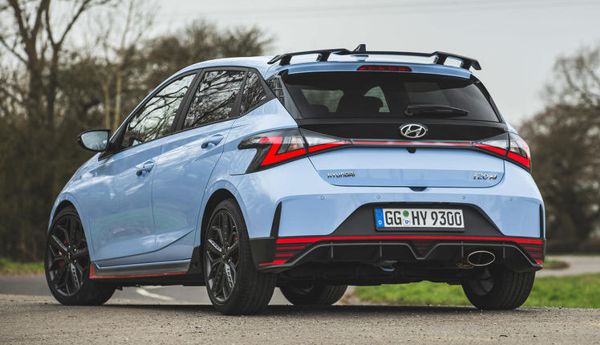 |
|
It
feels like a Mitsubishi Evo or Subaru Impreza STi, totally focused on
getting from A to B as quickly as possible...
|
|
Yet the highlight of N is chassis. Mr. Biermann gave the i20 N a
hardcore character to please keen drivers. Stiff and noisy ride
compared with Fiesta ST, tight body control, tremendous front-end grip,
sharp turn-in, neutral handling… In tight corners, its sticky front
tires and LSD eat the tarmac so hard that resist to spin or understeer.
It attacks corners with a precision like a rally car. It feels like a
Mitsubishi Evo or Subaru Impreza STi, totally focused on getting from A
to B as quickly as possible. The suspension constantly reminds you what
goes underneath. The steering tries to follow the camber of the road,
keeping you busy all the time. No matter in what modes, it feels highly
strung. That’s very different from a Fiesta ST, which is more
absorbent, more refined yet more playful in corners. Unlike the Ford,
the i20 N is so grippy and neutral that lift-off oversteering becomes
difficult to exploit. That is not necessarily a bad thing, just a
different character.
Apart from busy ride and noise, flaws are rather minor: the clutch is a
little vague; The brakes are not sharp enough; Steering feel is not as
tactile as Ford. These do not alter the opinion that the i20 N is
easily the fastest and most focused small hot hatch on the market. Just
hope it looks prettier.
|
Verdict:      |
|